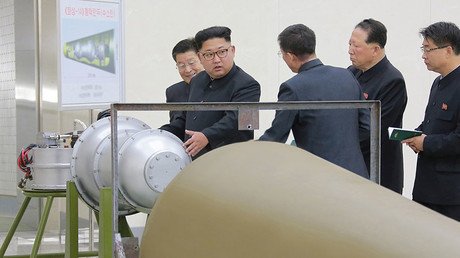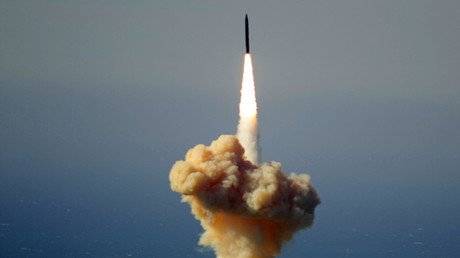H-bombs v A-bombs: What’s the difference & why does N. Korea crave thermonuclear?
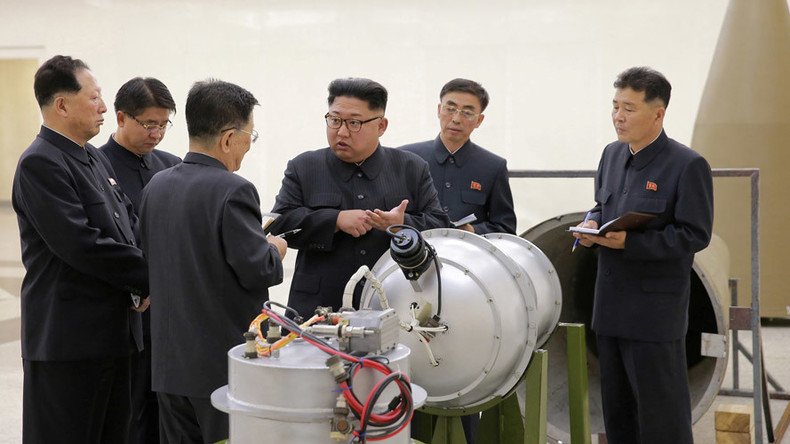
The most recent North Korean nuclear test was claimed by Pyongyang to be a successful hydrogen bomb detonation. While the experts question whether the country is actually capable of using it, what are the main differences between H- and A-bombs?
The test was performed by Pyongyang on September 3, and resulted in “perfect success,” according to the state media. The explosion caused a 6.3-magnitude earthquake according to the US Geological Survey (USGS) and was estimated to be at least 10 times more powerful than all the previous nuclear tests performed in the country.
What is an H-bomb?
The main difference between the thermonuclear (hydrogen) bomb and classic atomic (fission) bomb is that it relies on a combination of fission and fusion reactions to yield an explosion. The atomic bombs rely purely on fission, the same process of splitting atoms as in a nuclear power plant reactor. Thermonuclear fusion, meanwhile, is a process, which keeps the Sun and other stars hot and shiny.
To put even simpler, a small fission device within a thermonuclear bomb is used as a detonator to launch the fusion of isotopes of hydrogen, which releases large amounts of energy. The thermonuclear devices can produce far more powerful yield than the atomic bombs. While the very first atomic device yielded 20,000 tons of TNT, the first thermonuclear device yielded 10 million tons.
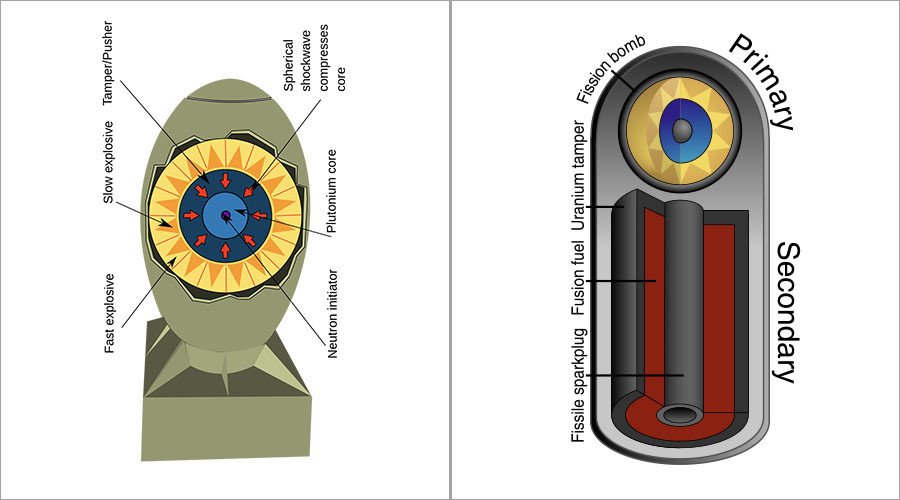
Thermonuclear devices do not have a theoretic cap for their power, as new layers of fusion fuel can be added to it. The power of a device is limited only to the availability of the fusion fuel and its dimensions being small enough to be transportable.
Achieving a miniature size of the device requires quite a sophisticated level of technology, as the aforementioned first thermonuclear bomb, tested by the US in 1952, was as large as a three-story building, filled with isotopes of hydrogen. The device included large machinery to provide cooling for the fission fuel to keep it stable before the detonation.
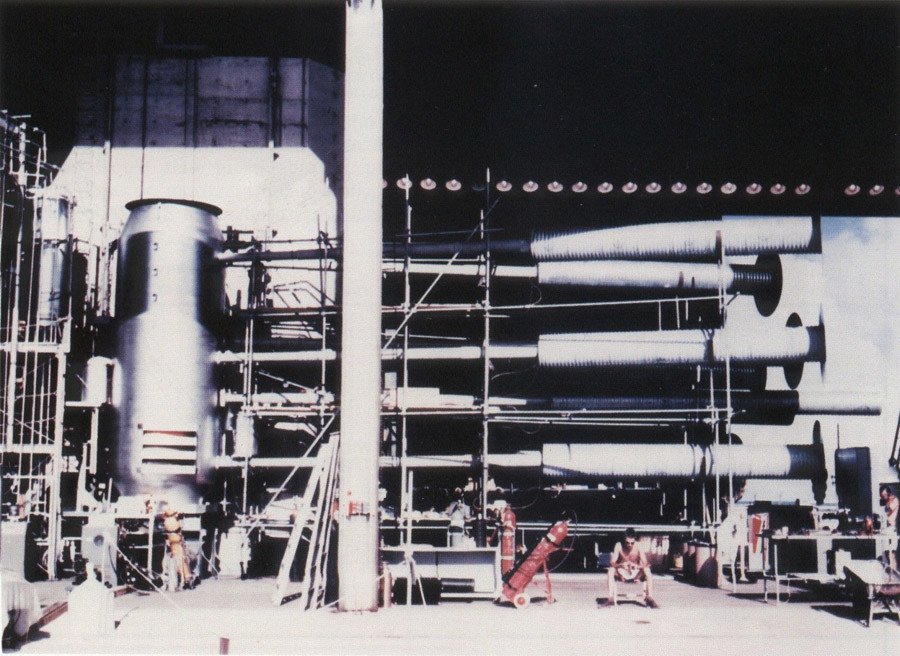
Did N. Korea test a thermonuclear device and how dangerous is it?
A professor of Korean studies at Kookmin University in Seoul, Andrey Lankov, believes North Korea is definitely in possession of a thermonuclear device, as they not only detonated it on September 3, but actually showed its design.
“They detonated [the device] and on the same day they showed a photo. Can you imagine: North Korea is the only country in the world which showed the genuine design of thermonuclear munition?” Lankov told RT.
“You know that up to date the setups of thermonuclear munitions, both of the American and of our ones [Russian], are a ‘super-duper’ state secret? Something leaked accidently, there have been several small leaks… The North Koreans showed and on the same day detonated it. So yes, there’s definitely a hydrogen bomb.”
Whether the thermonuclear device North Korea claims it possesses can fit into a ballistic missile is still doubtful, Glyn Ford, a former MEP and member of the Korean Peninsula Delegation believes.
“They have missiles capable of just about reaching the United States, but they don’t have the payload carry to a hydrogen bomb,” Ford told RT. “And they don’t have the sophisticated guidance, so all their hits will miss.”
North Korea, however, is potentially capable of launching a nuclear strike on its neighboring countries, “hitting Tokyo,” for example, Ford added.
Paul Kawika Martin, the Political & Communications Director at Peace Action, agrees with Ford, stating that lack of reliable missiles and miniaturized nuclear devices make the North Korean threat less than it looks like. Pyongyang, however, is striving to improve the reliability of its strategic nuclear and missile weaponry, and the threat should be taken very seriously.
“We don’t know if they have definitely been able to make a device small enough to fit on the missiles that they have,” Martin told RT.
“We don’t know if they solved the problem of a nuclear device actually surviving re-entry. … Those intercontinental ballistic missiles go into space and then come back in. On the re-entry those missiles undergo tremendous pressure, tremendous heat, so the payload or the nuclear device have to survive the re-entry and actually land in a country. We don’t know if they have that technology, but at this point we certainly need to act like they do have that technology.”
